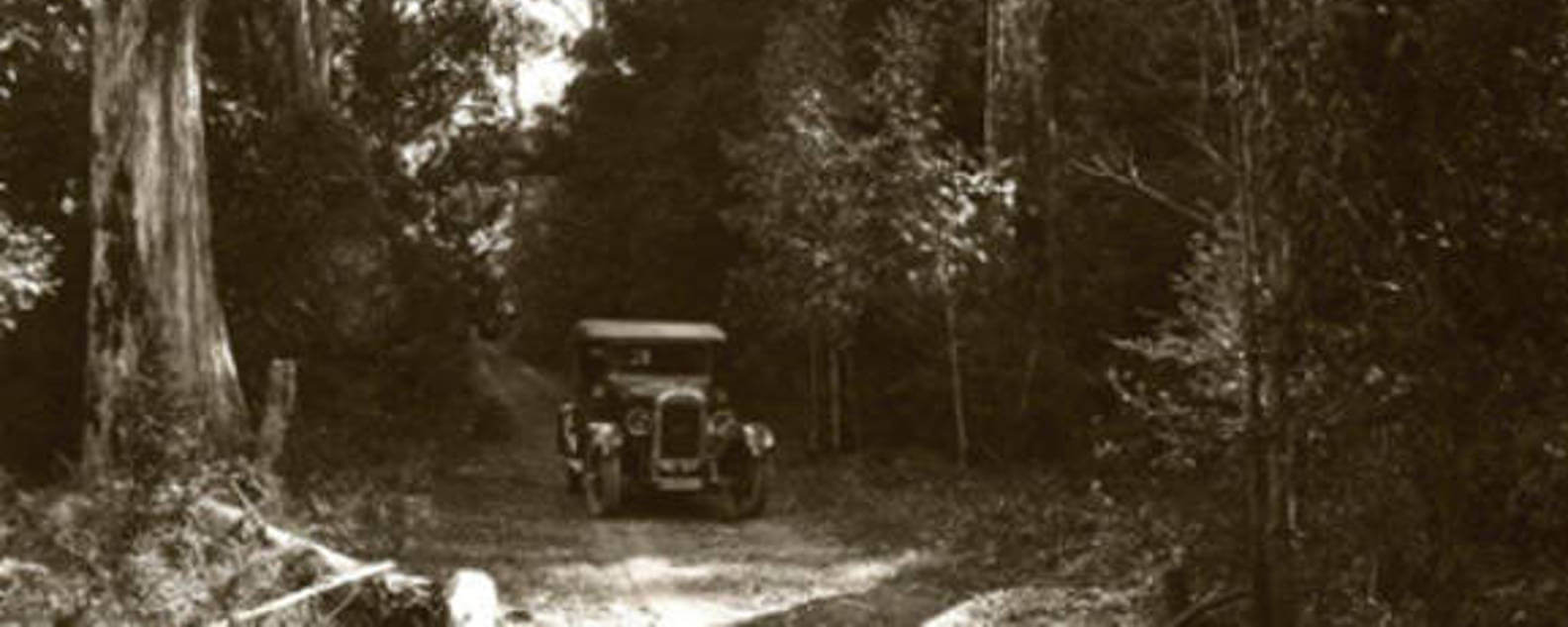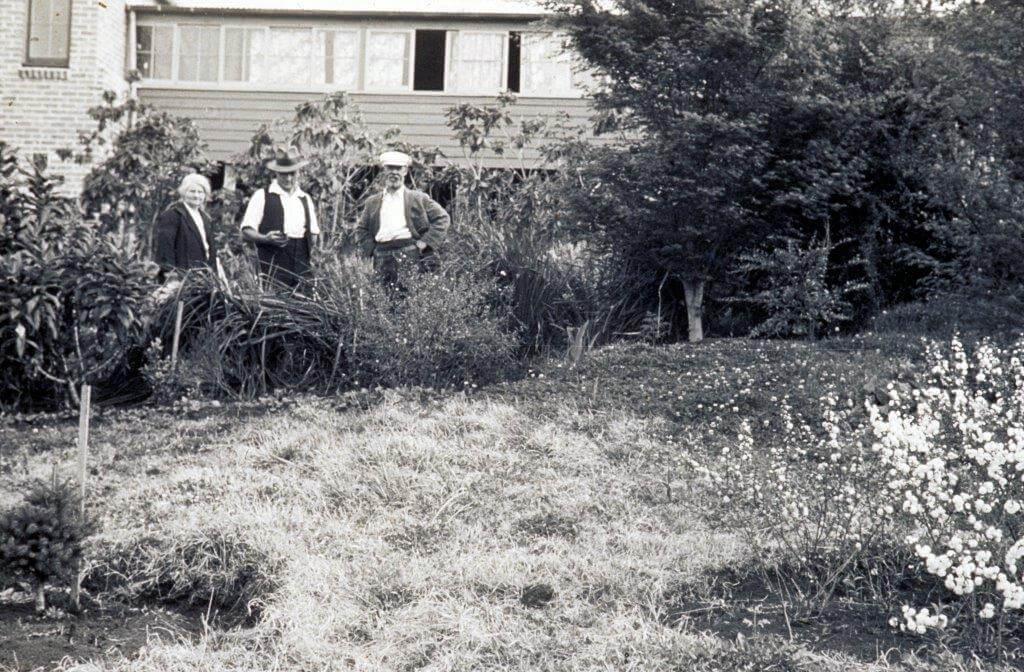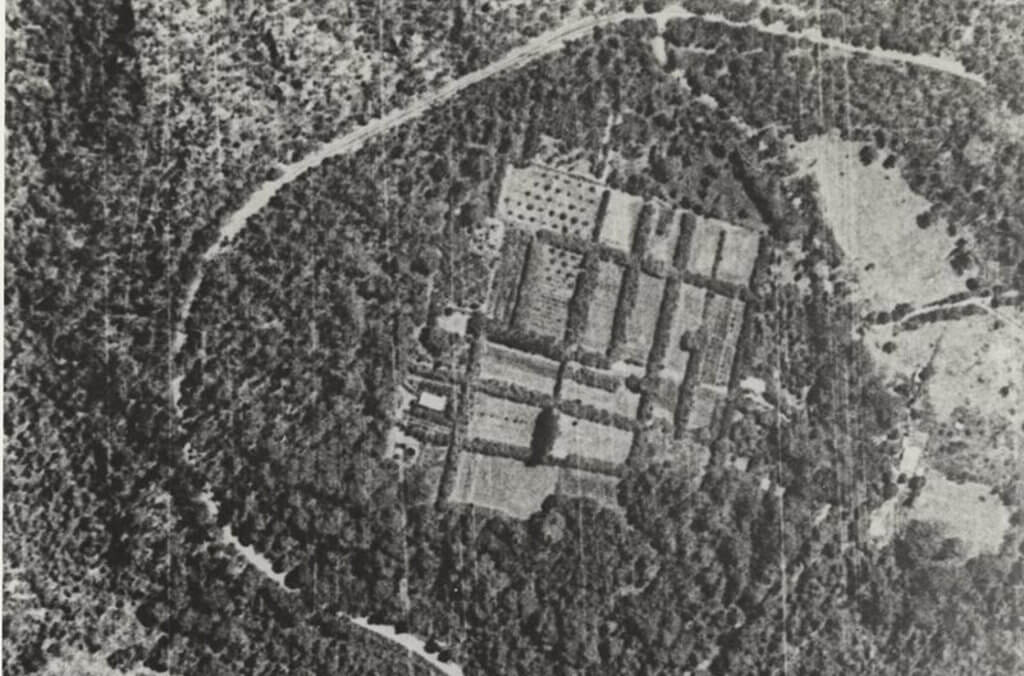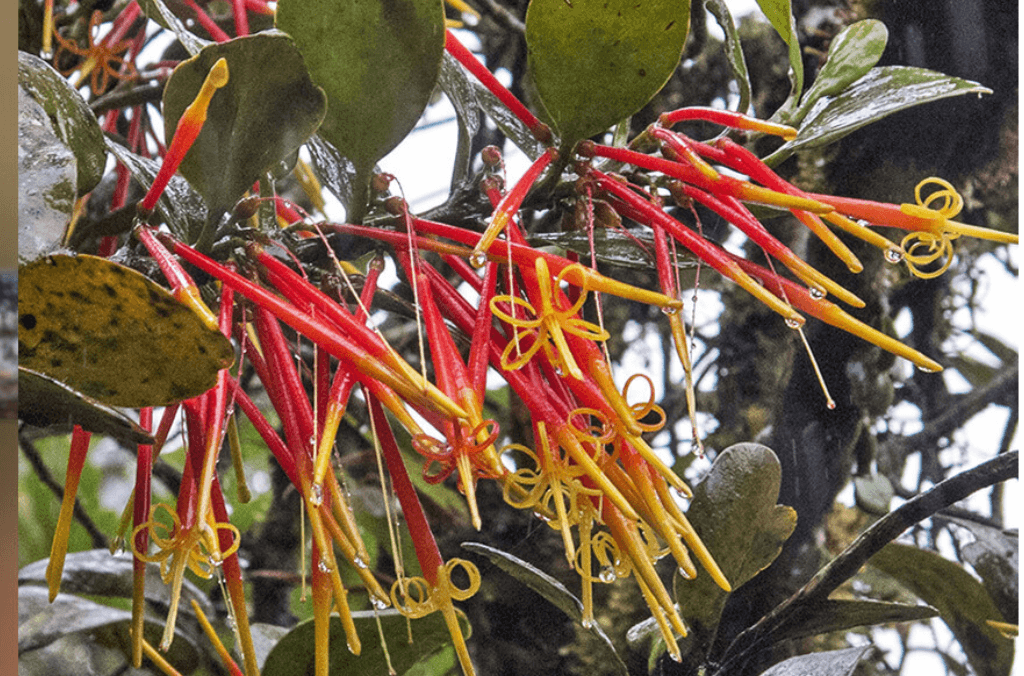A trip down memory lane
At 1,000 metres above sea level, Mount Tomah is the highest peak in the area and is a significant place to the Darug people, the traditional custodians of the land which extends from the Blue Mountains to metropolitan Sydney.


The Conservation area to the north of the Blue Mountains Botanic Garden Mount Tomah.
A snapshot in time
After arriving in the colony in 1800, botanical explorer and collector George Caley recognised that the local Aboriginal people's wealth of knowledge and their skills would later become invaluable to his scientific research. In 1804, he became the first European to visit Fern Tree Hill, now known as Mount Tomah.

'Crossing the Mountains' artist unknown.
Did you know? 'Tomah' is believed to be an Aboriginal word meaning 'tree fern'.
The Bowen family
Mount Tomah itself was granted in 1830 to an English lady, Mrs Susannah Bowen, the daughter of a vice-admiral and the widow of a naval captain.
The square mile of land (1,280 acres, 510 hectares) granted to Susannah, incorporates the whole of the Blue Mountains Botanic Garden Mount Tomah.
Susannah Bowen returned to Britain in 1836, leaving her son George with power of attorney. In 1838 he auctioned his mother’s Mount Tomah land, which was purchased by a friend, George Bartley, paymaster of the 50th Regiment at Windsor. It is unclear why, but in 1854 Bowen readvertised the Mount Tomah land for sale.
When it failed to sell he passed it on to his son George Bartley Bowen just before his death in 1883. It was George Bartley Bowen who in the 1860s built Mount Tomah Cottage, a wooden cottage with a large stone chimney, within the area now occupied by the Garden.

George M. C. Bowen

Early photo of the bullock team in Mount Tomah.
A fresh start
George Bartley Bowen continued to exploit his significant holdings on Mount Tomah, running his cattle there and planting orchards. In 1893, he sold his beef cattle and his Clydesdale horses and built up a dairy herd on the Mountain, including a dairy with a cream separator and a butter factory. By all accounts this endeavour failed miserably and G. B. Bowen became an absentee owner.
In 1895, G. B. Bowen sold all three blocks to Major Philip Charley of Broken Hill fame, who was living at Archibald Bell’s former estate at North Richmond. He used the land primarily for rearing horses, including mounts for the Army.
After several decades and many damaging bushfires, Charley went on to sell the land in 1935 to Mrs Effie Brunet. She and her husband, Alfred Louis Brunet, had already established a flower nursery at West Pennant Hills and were looking to expand their business by creating a cool-weather nursery at Mount Tomah.

Effie and Alfred with head gardener George Tunbridge.
The business of flowers
During its development as a nursery for cool-climate flowering plants, the recleared land was laid out in a series of large rectangular blocks divided by hedges, for the most part Cherry Laurel (Prunus laurocerasus) as protection from the strong prevailing winds. One of these hedges, now trimmed, forms a protective green wall between the car park and the Superintendent’s residence.
Block plantings were made of varieties of hyacinth, tulip, iris, lily, narcissus, lily of the valley, rhododendron, lilac, viburnum, kalmia, pieris and others obtained largely from Europe and Victoria. In other areas exotic ornamental trees and shrubs were planted, but the bulk of the uncleared land was left in a natural state.
Many local people assisted the Brunets at the Mount Tomah Nursery over the years, notably Basil Pittman, an Englishmen, and George Tunbridge, with whom Mr Brunet had an early horticultural association in England. Tunbridge lived permanently at Mount Tomah in very much bachelor-styled accommodation (affectionately called Miss Glen’s Cottage) near the old walnut tree until his death.

Alfred Brunet circa 1927

Mount Tomah was a cut-flower nursery under the Brunets.
Gardens combined
In the early 1960s Mr Brunet invited the Royal Botanic Gardens Sydney to inspect the Mount Tomah Nursery with the suggestion that the Gardens should receive it as a legacy on his death. The suggestion came as no surprise because the Brunets were known to have made generous donations in the past: in 1965 when the Mount Tomah Bushfire Brigade wanted to buy a tanker, the Brunets made the first contribution for a deposit; in the late 1960s they donated a piece of their land for a fire brigade shed. Brunet was a friend of Robert Henry Anderson, Director of the Royal Botanic Garden Sydney from 1945 until 1964, who supported Brunet’s proposal the Mount Tomah property be handed over to the Garden as a site for growing cool-climate plants. After Brunet death on the 26 November 1968, his widow asked that the property be accepted at the earliest possible date. On 7th August 1970, Mrs Brunet signed the papers surrendering the 28 acres (12ha) of Susannah Bowen’s original grant to the Crown for $1. On the 14 July 1972, the land was reserved for the Royal Botanic Garden Sydney.

Aerial map of the Blue Mountains Botanic Garden Mount Tomah circa 1980.
Learn more about the rich history of the Blue Mountains Botanic Garden Mount Tomah by taking a guided tour with one of our volunteers. More information here.
Related stories

Bunga Bangkai (Indonesian), Titan Arum or Amorphophallus titanum has the biggest, smelliest flower-spike in the world. It flowers for just 24 hours, once every few years… and in January 2025 one bloomed at the Royal Botanic Garden Sydney. Named Putricia by staff at the Botanic Gardens of Sydney, she quickly captivated people from all over the world, writes John Siemon, Director of Horticulture and Living Collections.

Mistletoe is in love potions, ancient medicines to ward off epilepsy and ulcers, and even a Justin Bieber Christmas song.

Mistletoe is in love potions, ancient medicines to ward off epilepsy and ulcers, and even a Justin Bieber Christmas song.